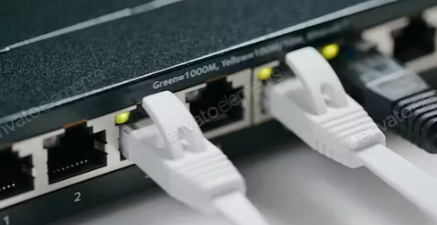A stable and reliable internet connection is essential for seamless online activities, whether for work, entertainment, or communication. However, internet connection issues can occur unexpectedly, disrupting your browsing experience. In this troubleshooting guide, we’ll explore top tips to help you diagnose and resolve common internet connection problems effectively.
1. Check Physical Connections:
Start by checking all physical connections, including cables, modems, routers, and devices. Ensure cables are securely connected, power sources are functioning, and hardware components are in good condition.
2. Restart Modem and Router:
If you’re experiencing internet connectivity issues, power cycle your modem and router. Turn them off, wait a few minutes, then power them back on. This simple step can often resolve minor network disruptions.
3. Wi-Fi Signal Strength:
Check the Wi-Fi signal strength on your device. Weak signal strength can lead to slow speeds and connection drops. Move closer to the router or consider using a Wi-Fi extender for better coverage.
4. Update Network Drivers:
Outdated or corrupted network drivers can impact internet connectivity. Update network drivers on your computer or device to ensure optimal performance and compatibility with the network.
5. Reset Network Settings:
If you’re unable to connect to the internet, reset network settings on your device. This process can clear network configuration issues and reset network adapters to establish a new connection.
6. Disable VPN or Proxy:
If you’re using a VPN or proxy server, disable these services temporarily to determine if they’re causing connectivity issues. VPNs and proxies can sometimes block or disrupt internet access.
7. Run Network Troubleshooters:
Most operating systems offer built-in network troubleshooters that can identify and fix common network problems. Run network diagnostic tools to help diagnose connectivity issues and apply recommended solutions.
8. Check Router Settings:
Access your router’s settings interface to review configurations, update firmware, and check for any settings that could impact internet connectivity. Ensure DHCP and DNS settings are correctly configured.
9. Scan for Malware:
Malware infections can disrupt internet connectivity and compromise network security. Run a full system scan using reputable antivirus software to detect and remove malware that may be affecting your network.
10. Contact Your ISP:
If you’ve exhausted troubleshooting steps and still experience internet connection problems, contact your Internet Service Provider (ISP) for assistance. Your ISP can perform remote diagnostics and help resolve connectivity issues from their end.
By following these troubleshooting tips, you can address common internet connection problems and restore stable connectivity for your devices. Remember to stay patient, thorough, and systematic in your troubleshooting approach to efficiently diagnose and resolve internet connection issues, ensuring a smooth and uninterrupted online experience.
